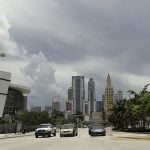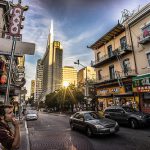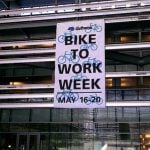Slower than a speeding bullet: building American high-speed rail
90 minutes: That’s how quick a bullet train may travel between Houston and Dallas. A railway company in Texas is now firming up its plans to build a high-speed train network between the two cities, reports the Texas Tribune, with hopes to begin operations by 2021. Though this project plans to operate without federal funds, the federal government must approve all new passenger rail systems and is currently doing an environmental impact study on the Houston-Dallas project.

Japanese bullet train. Image by Peter Glyn.
Expanding America’s high-speed rail has been a goal of the Obama administration, which has appropriated $10.5 billion to developing it, since 2009. As Time reports, the program’s goal was “partly about creating new routes for 200-mile-per-hour bullet trains like the ones already zipping around Europe and Asia, but it was mostly about improving slower-speed Amtrak routes so they would be incrementally faster and more reliable.” The plans for passenger rail in America weren’t intended to revolutionize the system, but instead to simply “make it less awful—a more realistic alternative to long drives and short flights.”
So, where are all the bullet trains today? Florida and California were the frontrunners in the state competition for federal rail funds for high-speed train projects. Florida originally had plans for a Tampa-Orlando-Miami high-speed train, a $2.4 billion project, but these were nixed — and the federal funds returned to Washington — by Governor Rick Scott.
Scott said that he killed the project because he predicted that cost excesses would cost Floridians an estimated $3 billion; because lower ridership would necessitate subsidies from the state; and because, if the project were to be shut down, the state would still have to return the funds. As the Tampa Bay Times reported, the majority of Scott’s research came from the findings of a Libertarian thinktank (“which typically takes a skeptical view of rail”), from a conservative foundation, and from a still-in-progress ridership study. (A government official later admitted that Florida would not have necessarily had to return the funds were the project to flop.)
If the Houston-Dallas high-speed rail project doesn’t come to pass first, California is on track to have the country’s first bullet train. Following “years of legal and political warfare,” track is now being installed in the Central Valley for a rail that will connect San Francisco and Los Angeles in under three hours by 2029. The system will later branch out to service Sacramento and San Diego, according to the California High-Speed Rail Authority, which has plans for 800 miles and as many as 24 stations.
The remainder of those federal funds will be used for lower-speed train projects, and improvements like bridge and tunnel repairs and upgrades. Yet these improvements should reap notable passenger benefits: for instance, by 2017 the trip time between St. Louis and Chicago will be reduced by almost an hour thanks to system updates that will increase train speeds from 79 to 110 miles per hour, with a similar impact on service between Detroit and Chicago. Other projects should help ease delays near San Jose, San Diego, Fort Worth and Oklahoma City. As Federal Railroad Administrator Joe Szabo told Time, these upgrades are “not as sexy, and maybe they don’t look like much, but they’re providing tangible benefits.”
Related Posts
Category: Infrastructure

















